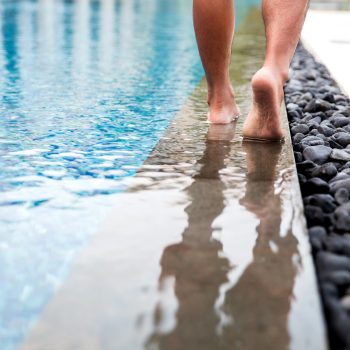Hand injuries do not just include trapping your hand and compression. A nerve may also be injured in other ways: “The nerves of the hand, wrist and forearm may be affected by a traumatic injury, for example a deep wound,” recalls Dr. Alberto Lazzerini, Head of the Operational Unit of Humanitas Hand Surgery. They are fairly common accidents, just think of cutting yourself with a kitchen knife, which require prompt diagnosis to allow proper treatment and thus ensure that the nerve can recover its functionality.
Shortening and reduction of mobility
The nerves are organs that connect the brain and the rest of the body. They send messages from the brain to the body, e.g. to the muscles for movement, or vice versa, they send messages to the brain. The nerves are made of very thin fibers and they are covered with a protective outer layer. Nerve lesions can be the result of excessive compression, as in carpal tunnel syndrome, when the median nerve passage in the carpal canal on the palm side of the wrist is very narrow. The cubital canal syndrome is also a result of trapping your hand, this time at ulnar nerve level, at elbow height.
The lesions may be temporary or permanent and of different entities. The damage a nerve may suffer may be lighter if its fibers are not interrupted (and in this case the lesion heals itself) or more severe, if the fibers are not intact or if there is total tearing of the nerve.
Symptoms of a traumatic nerve lesion are different: “They depend on which nerve the lesion has suffered and where it is located. At the distal level, if a nerve responsible for digital sensitivity is struck, the patient will lose the sensitivity of that finger. If, on the other hand, the lesion is on a larger trunk nerve, at the proximal level, in addition to sensitivity, motor function will also be compromised,” explains Dr. Lazzerini. In addition to numbness, you may also experience pain.
Still – continues Dr. Lazzerini – if the ulnar nerve is the one injured, on the wrist or forearm, the serious damage to sensitivity will affect the last two fingers while the whole hand will see its mobility decrease. If instead the trauma has affected the median nerve the sensitivity deficit will affect the first three fingers, those responsible for fine manipulation”.
It takes time for fibers to regenerate
After a trauma, the symptoms should never be underestimated: “The examination of the lesion should be thorough and should also cover the mobility and sensitivity of the hand. The diagnosis of peripheral nerve lesions can be supported by an electromyography but it is mainly clinical, with the evaluation of the patient’s motor and sensory deficit,” the specialist points out.
“The surgery requires an accurate microsurgical technique. On the other hand, if microsurgery is unclear or further away in time, in the case of laceration or tears, nerve grafts are used”.
Recovery is very slow: “The rehabilitation phase must be respectful of the time required for the regeneration of nerve fibers, in the order of several months. This process varies according to the type of lesion and nerve affected but, in addition to these elements, it is influenced by the patient’s characteristics. First of all, his age, recovery being slower in old age, patient’s state of health, diabetes that slows down nerve regeneration, and finally lifestyle choices: a habit such as addiction to cigarette smoking hinders this process. In any case – concludes Dr. Lazzerini – nerve regeneration is never complete but, depending on the nerve, the results are sufficient to recover the functionality of the hand and resume normal activities “.







